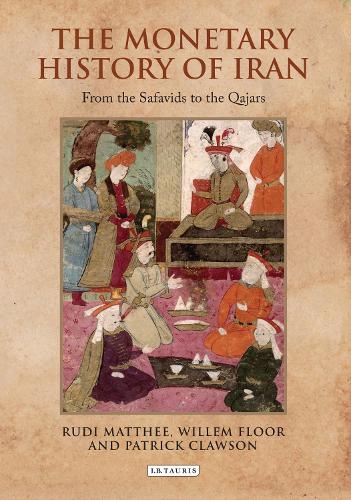
The Monetary History of Iran: From the Safavids to the Qajars
(Hardback)
Publishing Details
The Monetary History of Iran: From the Safavids to the Qajars
By (Author) Rudi Matthee
By (author) Willem Floor
By (author) Patrick Clawson
Bloomsbury Publishing PLC
I.B. Tauris
30th April 2013
United Kingdom
Classifications
Tertiary Education
Non Fiction
Monetary economics
Middle Eastern history
332.4/955
Physical Properties
Hardback
320
Width 156mm, Height 234mm
703g
Description
The monetary history of a country provides important insights into its economic development, as well as its political and social history. This book is the first detailed study of Iran's monetary history from the advent of the Safavid dynasty in 1501 to the end of Qajar rule in 1925. Using an array of previously unpublished sources in ten languages, the authors consider the specific monetary conditions in Iran's modern history, covering the use of ready money and its circulation, the changing conditions of the country's mints and the role of the state in managing money. Throughout the book, the authors also consider the larger regional and global economic context within which the Iranian economy operated. As the first study of Iran's monetary history, this book will be essential reading for researchers of Iranian and economic history.
Reviews
"This excellent, thorough hostory of money in Iransince the beginning of the Safavid dynasty, by leading experts in the field, is actually much more than that- it provides an essential foundation for an understanding of Iran's economic and political history in modern times.' Michael Axworthy, Director of the Centre for Persian and Iranian Studies, Exeter University 'This book fills a very major gap in Iran's economic history that has important ramifications for social and political history. Its descriptive, chronological narrative is well based on, and supported by, Persian and Western sources.' Gene R. Garthwaite, Jane and Raphael Bernstein Professor in Asian Studies, Emeritus and Professor of History, Emeritus, Dartmouth College.
Author Bio
Rudi Matthee is Professor of History at University of Delaware. He is the author of Persia in Crisis: Safavid Decline and the Fall of Isfahan (I.B.Tauris) and The Pursuit of Pleasure: Drugs and Stimulants in Iranian History, 1500-1900. Willem Floor is an independent scholar specialising in the history of Iran in the Safavid and modern ages. His publications include A Social History of Sexual Relations in Iran; Iran and the World in the Safavid Age (with Edmund Herzig, eds, I.B.Tauris); Labor and Industry in Iran, 1850-1941 and The Persian Gulf: A Political and Economic History of Five Port Cities 1500-1730. Patrick Clawson is Deputy Director of Research at the Washington Institute for Near East Policy and senior editor of Middle East Quarterly.
